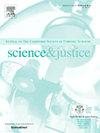Application of deep learning for detecting implants in computed tomography scout images with multi-institution and multi-vendor for personal identification
IF 2
4区 医学
Q2 MEDICINE, LEGAL
引用次数: 0
Abstract
The identification of deceased individuals is essential in forensic investigations, particularly when primary identification methods such as odontology, fingerprint, or DNA analysis are unavailable. In such cases, implanted medical devices may serve as supplementary identifiers for positive identification. This study proposes deep learning-based methods for the automatic detection of metallic implants in scout images acquired from computed tomography (CT). Using a multi-institutional and multi-vendor dataset, two object detection models, RetinaNet and Faster R-CNN, were trained and evaluated to ensure generalizability across diverse imaging conditions. The proposed models achieved improved performance in detecting various types of implants, significantly reducing false positives and improving classification consistency. These findings emphasize the potential of CT scout image analysis as a practical tool for supporting forensic identification through the efficient detection of implanted medical devices.
深度学习在多机构多厂商计算机断层扫描图像植入物检测中的应用
在法医调查中,死者的鉴定是必不可少的,特别是在无法获得诸如牙科、指纹或DNA分析等主要鉴定方法的情况下。在这种情况下,植入的医疗装置可作为正面识别的补充标识符。本研究提出了基于深度学习的方法来自动检测从计算机断层扫描(CT)获得的侦察图像中的金属植入物。使用多机构和多供应商的数据集,对两个目标检测模型(RetinaNet和Faster R-CNN)进行了训练和评估,以确保在不同成像条件下的通用性。所提出的模型在检测各种类型的植入物方面取得了更好的性能,显著减少了假阳性,提高了分类一致性。这些发现强调了CT侦察图像分析作为一种实用工具的潜力,可以通过有效检测植入医疗设备来支持法医鉴定。
本文章由计算机程序翻译,如有差异,请以英文原文为准。
求助全文
约1分钟内获得全文
求助全文
来源期刊

Science & Justice
医学-病理学
CiteScore
4.20
自引率
15.80%
发文量
98
审稿时长
81 days
期刊介绍:
Science & Justice provides a forum to promote communication and publication of original articles, reviews and correspondence on subjects that spark debates within the Forensic Science Community and the criminal justice sector. The journal provides a medium whereby all aspects of applying science to legal proceedings can be debated and progressed. Science & Justice is published six times a year, and will be of interest primarily to practising forensic scientists and their colleagues in related fields. It is chiefly concerned with the publication of formal scientific papers, in keeping with its international learned status, but will not accept any article describing experimentation on animals which does not meet strict ethical standards.
Promote communication and informed debate within the Forensic Science Community and the criminal justice sector.
To promote the publication of learned and original research findings from all areas of the forensic sciences and by so doing to advance the profession.
To promote the publication of case based material by way of case reviews.
To promote the publication of conference proceedings which are of interest to the forensic science community.
To provide a medium whereby all aspects of applying science to legal proceedings can be debated and progressed.
To appeal to all those with an interest in the forensic sciences.
 求助内容:
求助内容: 应助结果提醒方式:
应助结果提醒方式:


